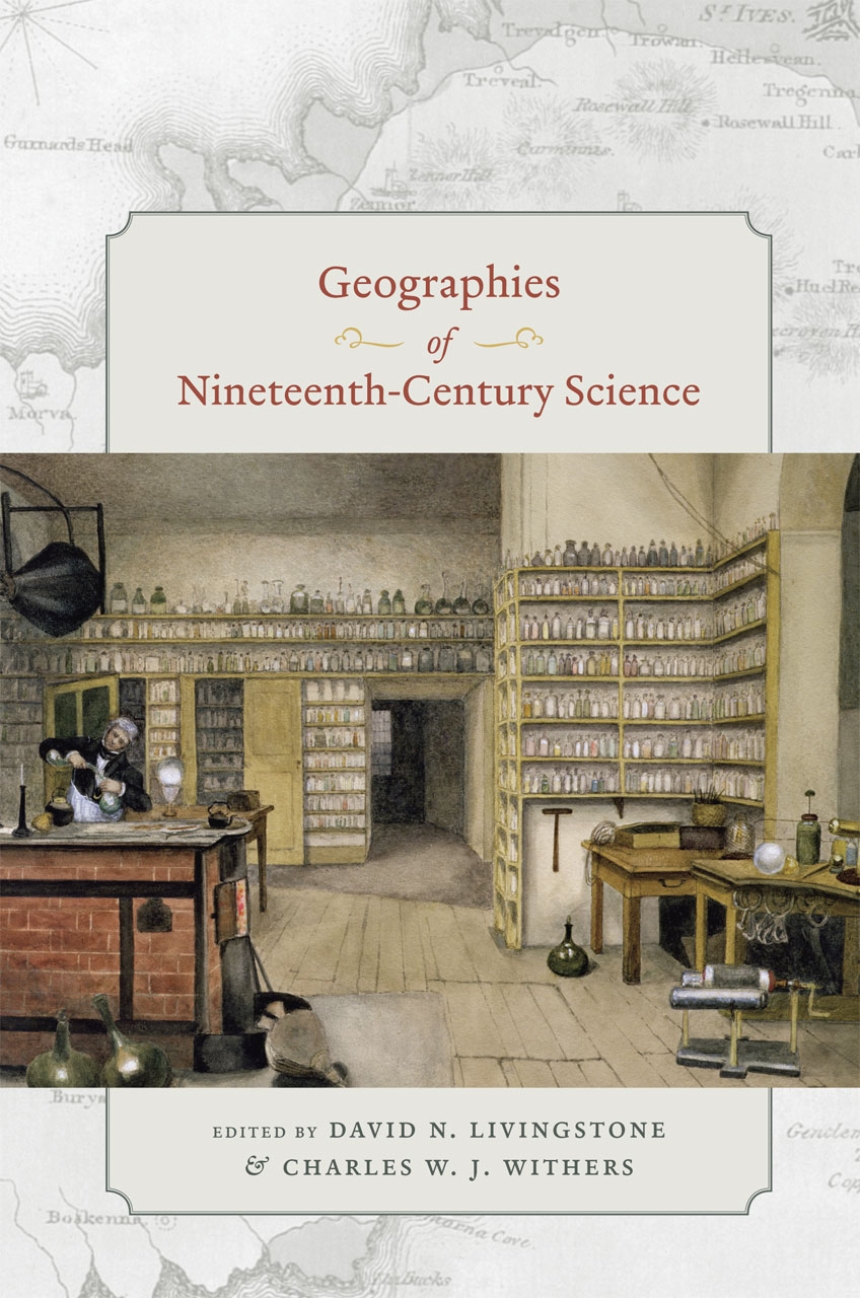Geographies of Nineteenth-Century Science
In Geographies of Nineteenth-Century Science, David N. Livingstone and Charles W. J. Withers gather essays that deftly navigate the spaces of science in this significant period and reveal how each is embedded in wider systems of meaning, authority, and identity. Chapters from a distinguished range of contributors explore the places of creation, the paths of knowledge transmission and reception, and the import of exchange networks at various scales. Studies range from the inspection of the places of London science, which show how different scientific sites operated different moral and epistemic economies, to the scrutiny of the ways in which the museum space of the Smithsonian Institution and the expansive space of the American West produced science and framed geographical understanding. This volume makes clear that the science of this era varied in its constitution and reputation in relation to place and personnel, in its nature by virtue of its different epistemic practices, in its audiences, and in the ways in which it was put to work.
536 pages | 41 halftones, 1 table | 6 x 9 | © 2011
Geography: Cultural and Historical Geography, Social and Political Geography
Reviews
Table of Contents
1. Thinking Geographically About Nineteenth-Century Science
CHARLES W. J. WITHERS AND DAVID N. LIVINGSTONE
Part One: Sites and Scales
2. Refashioning the Spaces of London Science: Elite Epistemes in the Nineteenth Century
BERNARD LIGHTMAN
3. The Status of Museums: Authority, Identity, and Material Culture
SAMUEL J. M. M. ALBERTI
4. Cultivating Genetics in the Country: Whittingehame Lodge, Cambridge
DONALD L. OPITZ
5. Scale and the Geographies of Civic Science: Practice and Experience in the Meetings of the British Association for the Advancement of Science in Britain and in Ireland, c. 1845–1900
CHARLES W. J. WITHERS
6. Islanded: Natural History in the British Colonization of Ceylon
SUJIT SIVASUNDARAM
Part Two: Practices and Performances
7. Placing Science in an Age of Oratory: Spaces of Scientific Speech in Mid-Victorian Edinburgh
DIARMID A. FINNEGAN
8. Politics, Culture, and Human Origins: Geographies of Reading and Reputation in Nineteenth-Century Science
DAVID N. LIVINGSTONE
9. Electricity and the Sociable Circulation of Fear and Fearlessness
GRAEME GOODAY
10. “The ‘Crinoline’ of Our Steam Engineers”: Reinventing the Marine Compound Engine, 1850–1885
CROSBIE SMITH
11. Expeditionary Science: Conflicts of Method in Mid-Nineteenth-Century Geographical Discovery
LAWRENCE DRITSAS
Part Three: Guides and Audiences
12. Pressed into Service: Specimens, Space, and Seeing in Botanical Practice
ANNE SECORD
13. Science, Print, and Crossing Borders: Importing French Science Books into Britain, 1789–1815
JONATHAN R. TOPHAM
14. Geological Mapping and the Geographies of Proprietorship in Nineteenth-Century Cornwall
SIMON NAYLOR
15. Natural History and the Victorian Tourist: From Landscapes to Rock-Pools
AILEEN FYFE
16. Place and Museum Space: The Smithsonian Institution, National Identity, and the American West, 1846–1896
SALLY GREGORY KOHLSTEDT
Afterword: Putting the Geography of Science in Its Place
NICOLAAS RUPKE
Bibliography
Contributors
Index
